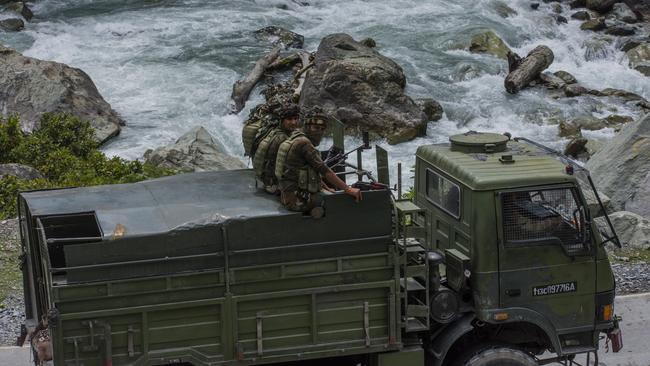India excludes Chinese firms from 5G network
Huawei and ZTE have been bounced just before the anniversary of a bloody clash on the nuclear giants’ disputed border.

Narendra Modi’s government has excluded Chinese telcos from India’s 5G network weeks before the first anniversary of a deadly clash on the nuclear giants’ disputed border.
China’s embassy in India expressed its “concern and regret” about the blow to Huawei and ZTE who were denied approval to build the network of the world’s second biggest phone market.
External Affairs Minister Jaishankar said the Galwan Valley clash that last June killed 20 Indian soldiers and four Chinese troops had changed the Modi government’s approach to its giant neighbour. “I can’t have friction, coercion, intimidation, and bloodshed on the border, and then say let us have a good relationship in other domains. It is not realistic,” he said in London where he was attending a G7-plus foreign ministers’ meeting.
India’s formal exclusion of Chinese companies from its 5G network was announced as the G7 foreign ministers’ talks opened with a 90-minute session on China’s assertive behaviour.
The ban brings India in step with its partners in the Quadrilateral Security Dialogue – the US, Australia and Japan – who have all excluded Chinese providers from their 5G networks on security grounds. Four members of the Five Eyes intelligence network, the US, UK, Australia and New Zealand, have excluded Chinese telcos from their 5G networks. The fifth member Canada has not yet announced its decision, but Prime Minister Justin Trudeau is consulting with allies and Canada’s security officials.
Mr Jaishankar said India’s relationship with China was “going through a very difficult phase, because – in violation of agreements and understandings of many, many years – the Chinese have deployed a very large part of their military on, and close to, the Line of Actual Control, without explanation, and they continue to be there”. The LAC is the name of the disputed mountainous border shared by China and India.
Chinese troop presence surged on the border a year ago and was followed by the first deadly clash there in 45 years. China has removed some tanks and a helipad, but thousands of troops have still not disengaged.
While excluding all Chinese companies, India’s Department of Telecommunications said it had approved telcos operating in India to begin 5G network trials using equipment from Swedish multinational Ericsson, Finnish multinational Nokia, South Korean giant Samsung, along with the Indian-government owned C-DOT and India’s biggest company Reliance.
The Chinese embassy expressed its “concern and regret” about the decision, which it said would also hurt Indian companies. “To exclude Chinese telecommunications companies from the trials will not only harm their legitimate rights and interests, but also hinder the improvement of the Indian business environment, which is not conducive to the innovation and development of related Indian industries,” said spokesman Wang Xiaojian.
The 5G exclusion follows the Indian government’s decision last year to ban more than 200 Chinese apps – including WeChat, TikTok, and Alibaba’s UC Browser – from India’s fast growing market, as the border dispute simmered. In an interview with China’s state-controlled tabloid Global Times, Xiang Ligang, a telco expert in Beijing, said India’s decision was a big loss for Huawei and ZTE. He noted that the more than 800,000 4G base stations in India were almost three times the number in the US.




To join the conversation, please log in. Don't have an account? Register
Join the conversation, you are commenting as Logout